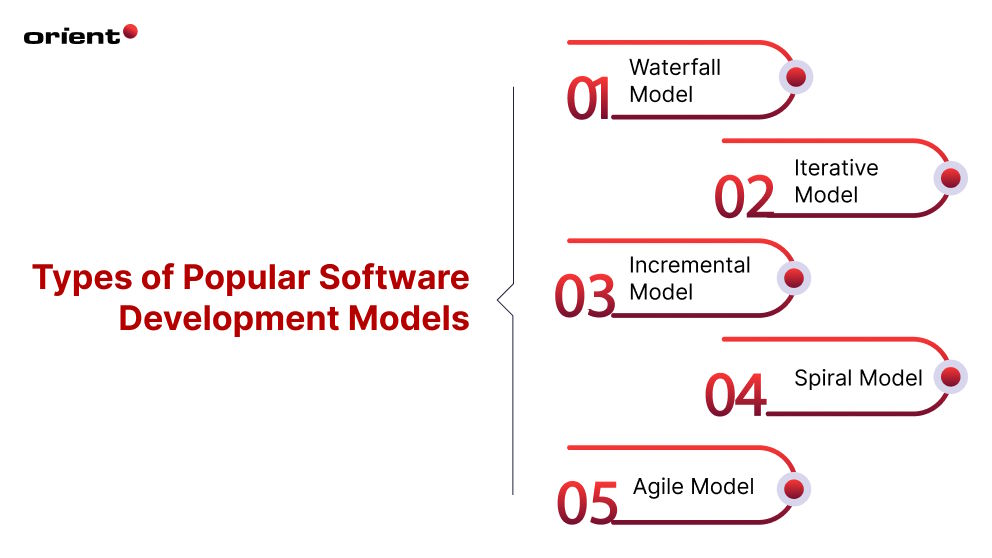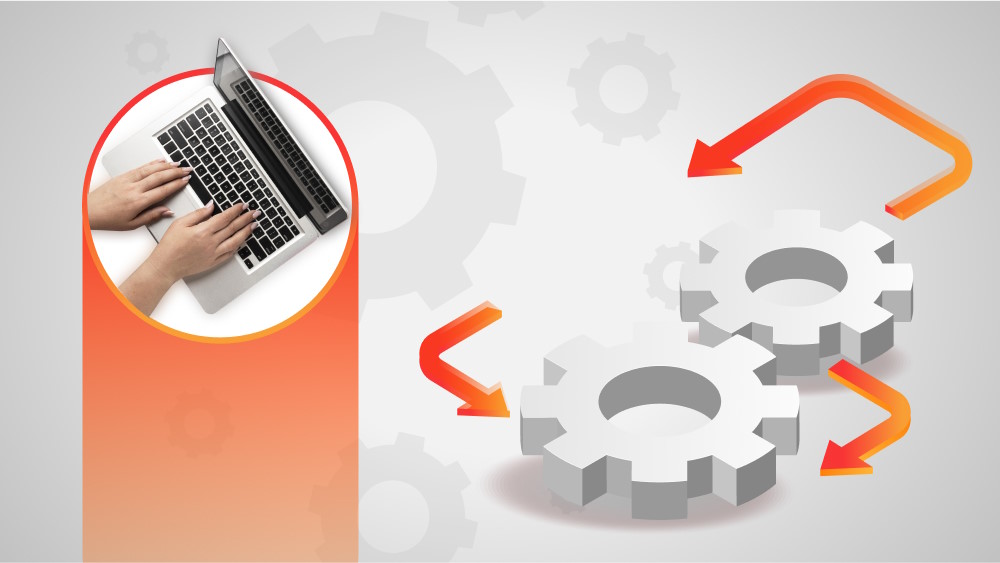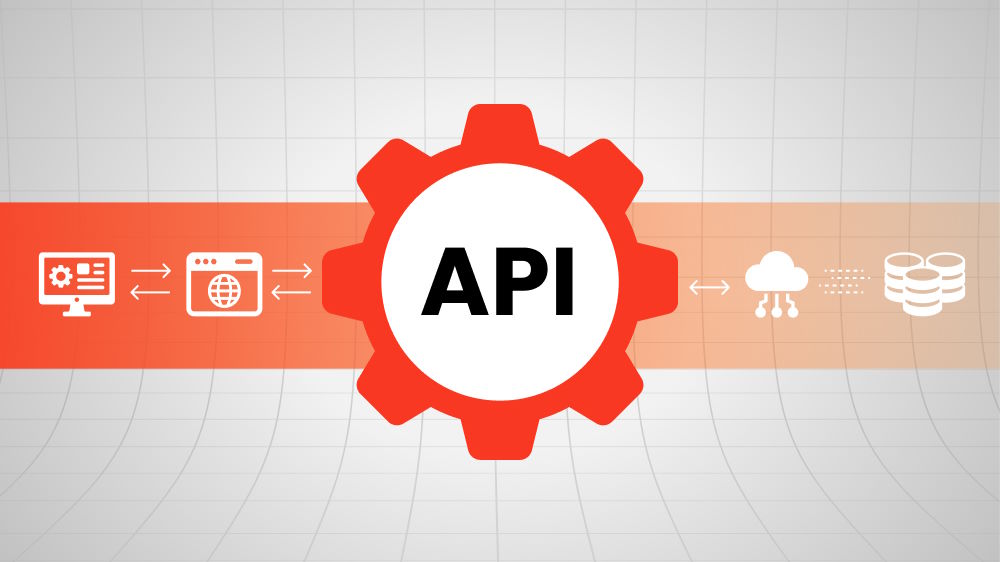Stay Ahead of the Game: Exploring Top Next-gen Software Development Models

Content Map
More chaptersSoftware development is more than a complex process since it requires tons of steps, from ideation, planning, deploying, and designing to testing and maintenance. However, experienced development teams often don’t take risks by letting the process happen naturally and without organization, which may lead to project delays and budget overruns. On the contrary, they apply what is called “software development life cycle (SDLC) models” to systematize the software development process and all the elements related to the project and maximize their opportunities for success.
Today, there are more than 50 SDLC models with distinct benefits used in businesses of all sizes. There is no universal formula for all users because each individual and organization has its own nature and way of handling work. However, choosing the wrong software development model is no longer a matter of budget and outcome quality, as such a wrong decision can even lead to project failure.
So, with various software development models available, which is the most suitable one for you?
Benefits of Using Software Development Process Models
There is no way for an organization not to use a particular software development model for its project management. Why? There is a myriad of models available in this entire market. While an organization may lack orientation, its development process can still be translated into some sort of model as they strive to complete it. This means unorganized development can still be modeled if there is an effort toward completion and software development models exist alongside the product development processes.
However, instead of doing nothing and leaving the development process to “go with the flow” carelessly, development teams receive a welfare collection if they approach the right SDLC models. Below are some typical advantages businesses can consider.
Provide a Structured Approach to the Software Development Process
Everything is codified in an organized way when a software development project is applied to a specific SDLC model. Specifically, software development models will help businesses break the development process into a series of well-defined phases or stages that need to be followed in order. Predefined objectives, deliverables, etc., in each phase, will be different depending on the product owner’s requirements but still, ensure the logic. With a comprehensive picture of the product roadmap, every developer works proactively towards the same goals and expectations, promoting a smooth and efficient workflow across departments.
Limit Risks throughout the Software Development Life Cycle
Although software development models help the company’s operational activities be performed in a logical sequence, there will always be unexpected technical problems or internal issues during the development process. Adhering to a structured cycle may be beneficial for conducting risk analysis in this scenario. In closely monitoring development stages, the in-house team can quickly detect risks during operation, thereby promptly implementing remedial measures and minimizing the impact of errors on the product. While nothing can guarantee the occurrence of issues will be completely eliminated, using SDLC models can greatly reduce error likelihood and improve the overall success and quality of software development projects.
Promote Overall Efficiency and Team Productivity
People are an organization’s greatest strength, making the survival and success of complex projects. Applying the right software development model helps businesses maximize the capabilities of the project team. To keep the software implementation process on track, the structured life cycle at the initial stages establishes clear roles and responsibilities for every team member. Knowing where they stand in the organization helps individuals ensure the quality of their work, meet deadlines, prioritize work effectively, and avoid unnecessary delays or confusion. Because all departments are pursuing a common goal, enterprises improve collaboration and communication efficiency, resulting in increased efficiency and productivity.
Factors to Consider when Choosing Models in Software Development
The most used software development models are not necessarily the ones for you. There is no one-size-fits-all approach to the development model due to the business’s distinct natures, products, technical requirements, and more. Accessing these vital factors below to align with the most suitable SDLC models.
- Project Requirements: Understand your own business before adopting any particular model by outlining the list of requirements, such as project size, scope, market niche, and the level of flexibility and complexity required.
- Time Sizes and Composition: The size and expertise of the development team directly affect the chosen structured life cycle.
- Customer Involvement: Consider the level of customer involvement when choosing a model, as some allow direct interaction and collaboration through customer feedback while others do not.
- Time Constraints: Time limitation controls how you operate the development process based on different software development models.
- Risk Tolerance: Each software development model offers varying levels of system security. Some models allow continuous testing, and iteration models obviously manage risks better than the others.
- Resources and Budget: Your model may require additional resources or specific tools, which is why the budget is an important factor to consider.
- Organizational Culture: Some models will not be suitable for traditional companies with hierarchical structures and vice versa.
Types of Popular Software Development Models

Different software development models are suitable for different project types. While no model is perfect, let’s examine some commonly used models in this field.
Waterfall Model
The Waterfall model is one of the oldest methodologies in software engineering. This sequential approach follows a linear and rigid process, with each given stage of the development lifecycle completed consecutively. Regardless of how many development stages your product has, each is required to be fully completed before moving on to the next without any overlapping. Due to the strict linear progression, every phase in the Waterfall model has its own set of documents and deliverables, which forces the development team to achieve before going through the next phases.
Although this model provides high predictability for schedule and resources, its lack of flexibility and adaptability poses many obstacles for businesses, especially in today’s fast-paced and constantly evolving software development landscape. Companies with well-defined requirements and minimal expectations for changes may still apply the Waterfall model during the development process.
Iterative Model
An Iterative model is an approach to the software development process that concentrates on delivering the project via incremental improvements and small iterations. By dividing the project into smaller iterations or cycles, the in-house team is responsible for providing the full working process, including planning, designing, developing, and testing activities for each iteration. An iteration is considered complete when all steps in the development process have been completed, and there are necessary changes and improvements based on stakeholder feedback. And the process repeats with the next iteration.
Unlike the Waterfall model, which follows a sequential and linear process, the Iterative model allows for flexibility, continuous refinement, and collaboration. This model is especially suitable for complex projects as it simplifies the development process by breaking it down into smaller units and making each further iteration a better version of the product.
Incremental Model
The Incremental model and Iteration model are two software development models that often confuse newcomers. Although sharing some similarities, they are two completely different concepts. While both models follow an iterative approach and involve multiple cycles, the primary difference lies in their focus and goal. Iterative development breaks down the development process into small stages and continuously improves each based on feedback. Incremental development focuses on delivering a completely functional product by adding new features or functionality to the product in order of preference.
The product can possess only one important feature in the initial stages, with each increment potentially representing an iteration of an MVP (Minimum Viable Product). However, by offering value early, businesses promptly collect feedback, incorporate changes efficiently, and iteratively refine their products.
Spiral Model
The Spiral model emphasizes thorough risk assessment, allowing for continuous refinement and risk mitigation throughout the software development process. Similar to other software development models, the Spiral model separates the product life cycle into distinct phases. However, before the deployment activities officially take place, this model first enters phases that prioritize resolving the issue that poses the highest risk of failure, which may include prototyping, carrying feasible studies, or conducting user surveys to collect their opinions.
By proactively addressing risks early on, the Spiral model demonstrates well its ability to manage and prevent potential issues from becoming critical.
Agile Models
It would be remiss not to mention the most popular Agile model in this list, which offers bunches of desirable benefits. Agile software development represents flexibility, collaboration, adaptive planning, and continuous improvement in response to the limitations of traditional methodologies that struggle with changing requirements and stakeholder needs. In the Agile model, the development stage is separated into short iterations called sprints, which last for a maximum of four weeks. Each sprint requires the project team to work closely with stakeholders and conduct regular retrospectives. By letting customers and end-users be involved throughout the development process, Agile methodology accepts all necessary changes to reduce the likelihood of delivering a product that fails to meet customer expectations.
There are three models that use Agile methodology as their guiding methodology as below:
- Scrum Model: As the most popular Agile model, Scrum divides the development process into time-boxed iterations called sprints, which cannot be changed once defined. At the end of a specific sprint, the project team gathers around for a meeting and reviews the whole increments of working software.
- Kanban Model: Kanban Agile model visualizes the project workflow by using a Kaban Board. By laying out the required tasks publicly, this model creates transparency and efficiently prioritizes urgent tasks in order.
- Extreme Programming (XP): XP model enables the development team to make necessary changes post-launch, even when using different software. This flexibility encourages a healthy work-life balance and long-term productivity.
There are indeed a lot more other software development models in this industry, namely the Rational Unified Process (RUP), V-model (Verification and Validation model), RAD model (Rapid Application Development Model), Lean model, etc. Orient Software advises choosing SDLC models based on your specific needs and context rather than following a generic formula. When done right, any existing structured life cycles may all provide project teams with the highest level of documentation and management control, leading to successful outcomes.







